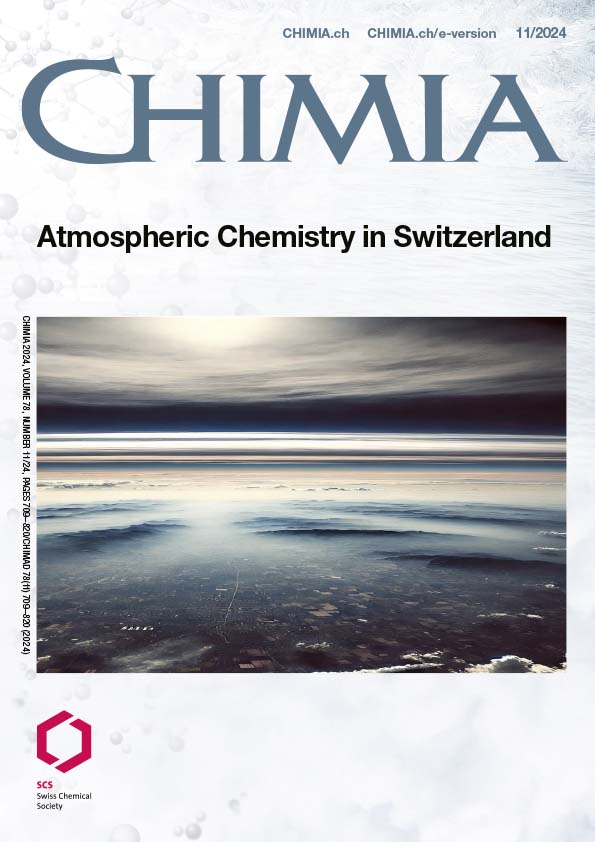Molecular Mechanisms of Aerosol Nucleation: from CLOUD Chamber Experiments to Field Observations
DOI:
https://doi.org/10.2533/chimia.2024.739PMID:
39618275Keywords:
Chamber experiments, Ions, Molecular clusters, Particle formation rates, VaporsAbstract
Atmospheric aerosol particles contribute to over four million premature deaths annually and play a critical role in modulating Earth’s climate. Most atmospheric particles and more than 50% of the cloud condensation nuclei are formed through a secondary process named new particle formation involving unique precursor vapors. This article summarizes current knowledge of how new atmospheric particles form, based on experiments at the CERN CLOUD chamber. While the role of sulfuric acid has long been known, other vapors like highly oxygenated organic molecules and iodine oxoacids are also important, along with stabilizers like ammonia, amines, and ions from cosmic rays. We explain how findings from CLOUD experiments help us understand particle formation in various atmospheric conditions and improve air quality and climate models.
Funding data
-
Schweizerischer Nationalfonds zur Förderung der Wissenschaftlichen Forschung
Grant numbers 2021_21307 and 216181
Downloads
Published
Issue
Section
License
Copyright (c) 2024 Lubna Dada, Wei Huang, Imad El-Haddad

This work is licensed under a Creative Commons Attribution 4.0 International License.







